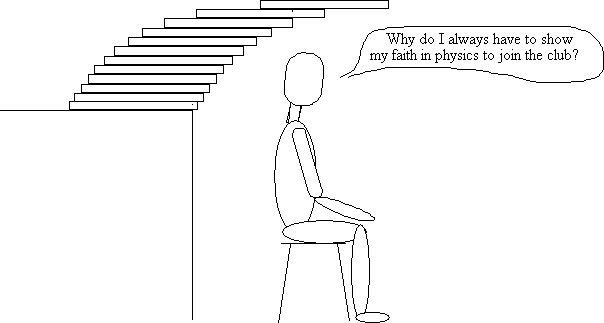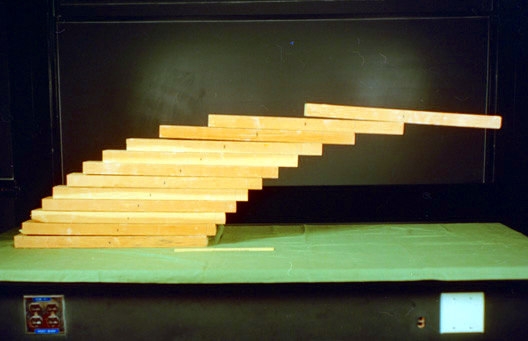A dozen blocks are stacked on top of each other over the edge of the table seemingly defying gravity.
What it shows:
N objects of unit length can be stacked on top of each other so that the top object sticks out over the edge of the lecture bench by a distance equal to 1
1/2 + 1/4 + 1/6 + 1/8 + ... + 1/(2N)
For N approaching ∞, the diverging infinite sum suggests that the top of the pile can stick out an infinite distance. In actuality the divergence is slow, 2 and our more practical stack of a dozen 2 × 4 "blocks" can project 1.5 times the length of the 2 × 4 out over the edge of the bench. Only four "blocks" are needed for the top one to extend beyond the edge.
How it works:
The "blocks" are 2-ft long pieces of 2 × 4 lumber. They have been numbered and marked to expedite the presentation of the demo. Start by placing the bottom one on the lecture bench with a slight overhang and continue to build the stack with increasing overhangs until you end up with a pile looking something like this:


Comments:
As suggested by the figure, there are many ways to liven up this demonstration to make it great fun.
1 P. Johnson, Am J Phys 23, 240 (1955) and L. Eisner, Am J Phys 27, 121 (1959). R. Ehrlich has revived the demonstration in The Physics Teacher 23, 489 (1985) and in his book Turning the World Inside Out (Princeton University Press, N.J., 1990).
2 Ehrlich points out that 1.5 × 1044 meter sticks are needed to get an extension of 10 meters!